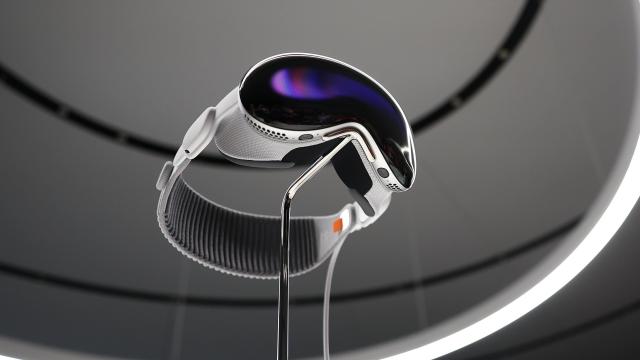The apps are coming for Apple’s not-VR/AR headset. Even though the Vision Pro headset won’t see release until 2024, Apple is hoping to have a wide suite of 3rd party apps available at launch, potentially some that could entice more customers to drop $US3,500 ($4,859) on a its so-called “spatial computer.”
On Wednesday, Apple shared that it was releasing the software development kit for its upcoming Vision Pro headset. Apple said developers can now start crafting their own “spatial experiences,” which — if you want to avoid Apple’s stringent sense of proprietary nomenclature — is just more virtual and augmented reality software.
The company said that it would be opening up development labs in Cupertino, as well as in the U.K., Germany, China, Taiwan, and Japan for devs to fully test their apps on the Vision Pro hardware. Otherwise, teams can apply for dev kits to test their apps next month. In its release, Apple VP of developer relations Susan Prescott promised that making apps for the Vision Pro would be akin to coding on the company’s other platforms with similar “foundational frameworks” like Xcode, SwiftUI, ARKit, and TestFlight. The SDK and updated dev software are already available for those paying for an Apple Developer Program membership.
So far, Apple’s showcase of its upcoming device has centered on how the Vision Pro is used for existing apps like FaceTime and Safari. Other than in workplace apps, most other uses have been for home entertainment with a Disney tie-in for more 3D movies and “spatial” videos. External devs could potentially go wild with the visionOS AR infrastructure, though we’ll likely have to wait half a year or more to see how they can truly push the hardware.
9to5Mac also gained access to the visionOS suite, and used it to access a simulation of the Vision Pro UI. According to images of the OS posted by Ian Zelbo, the headset should come stock with a very macOS-like Control Centre and Spotlight Search alongside existing Apple apps like Freeform.
While the photos show what we already know was included from Apple’s original announcement plus Gizmodo’s own hands-on, there’s a few extras not immediately available in demos. The UI will include a virtual keyboard and emoji keyboard, though it’s unclear if users will be able to use gesture controls to type when in use.
I tested out visionOS for Apple Vision Pro! 👀 pic.twitter.com/DbBfWHSrYX
— Ian Zelbo (@ianzelbo) June 21, 2023
The App Store arguably made the iPhone what it is today. Having a legion of people working to make new apps, and make Apple money, catapulted the idea of a smartphone from “telephone with a screen” to miniature computer with social connectivity. Can Apple’s legion of dedicated third party developers do the same for the Vision Pro out the starting gate? The Cupertino, California-based tech giant likes to think so.
